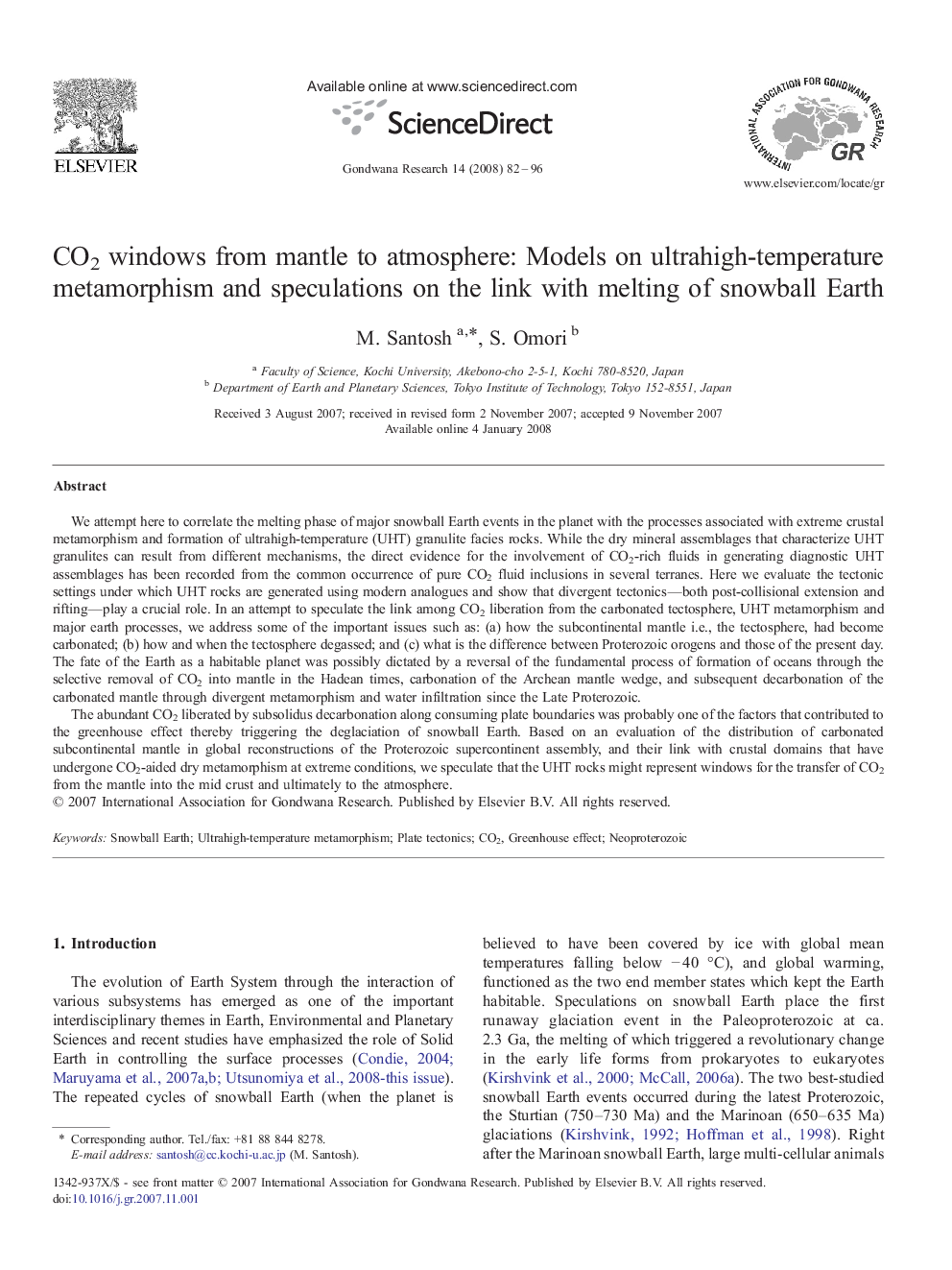| Article ID | Journal | Published Year | Pages | File Type |
|---|---|---|---|---|
| 4727944 | Gondwana Research | 2008 | 15 Pages |
We attempt here to correlate the melting phase of major snowball Earth events in the planet with the processes associated with extreme crustal metamorphism and formation of ultrahigh-temperature (UHT) granulite facies rocks. While the dry mineral assemblages that characterize UHT granulites can result from different mechanisms, the direct evidence for the involvement of CO2-rich fluids in generating diagnostic UHT assemblages has been recorded from the common occurrence of pure CO2 fluid inclusions in several terranes. Here we evaluate the tectonic settings under which UHT rocks are generated using modern analogues and show that divergent tectonics—both post-collisional extension and rifting—play a crucial role. In an attempt to speculate the link among CO2 liberation from the carbonated tectosphere, UHT metamorphism and major earth processes, we address some of the important issues such as: (a) how the subcontinental mantle i.e., the tectosphere, had become carbonated; (b) how and when the tectosphere degassed; and (c) what is the difference between Proterozoic orogens and those of the present day. The fate of the Earth as a habitable planet was possibly dictated by a reversal of the fundamental process of formation of oceans through the selective removal of CO2 into mantle in the Hadean times, carbonation of the Archean mantle wedge, and subsequent decarbonation of the carbonated mantle through divergent metamorphism and water infiltration since the Late Proterozoic.The abundant CO2 liberated by subsolidus decarbonation along consuming plate boundaries was probably one of the factors that contributed to the greenhouse effect thereby triggering the deglaciation of snowball Earth. Based on an evaluation of the distribution of carbonated subcontinental mantle in global reconstructions of the Proterozoic supercontinent assembly, and their link with crustal domains that have undergone CO2-aided dry metamorphism at extreme conditions, we speculate that the UHT rocks might represent windows for the transfer of CO2 from the mantle into the mid crust and ultimately to the atmosphere.
